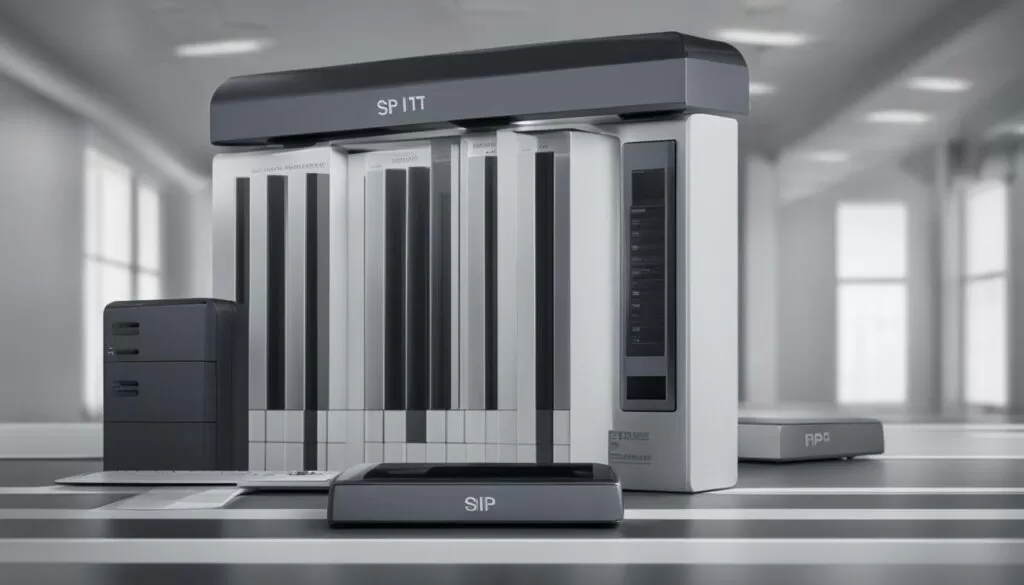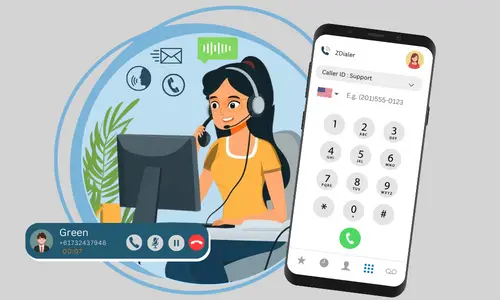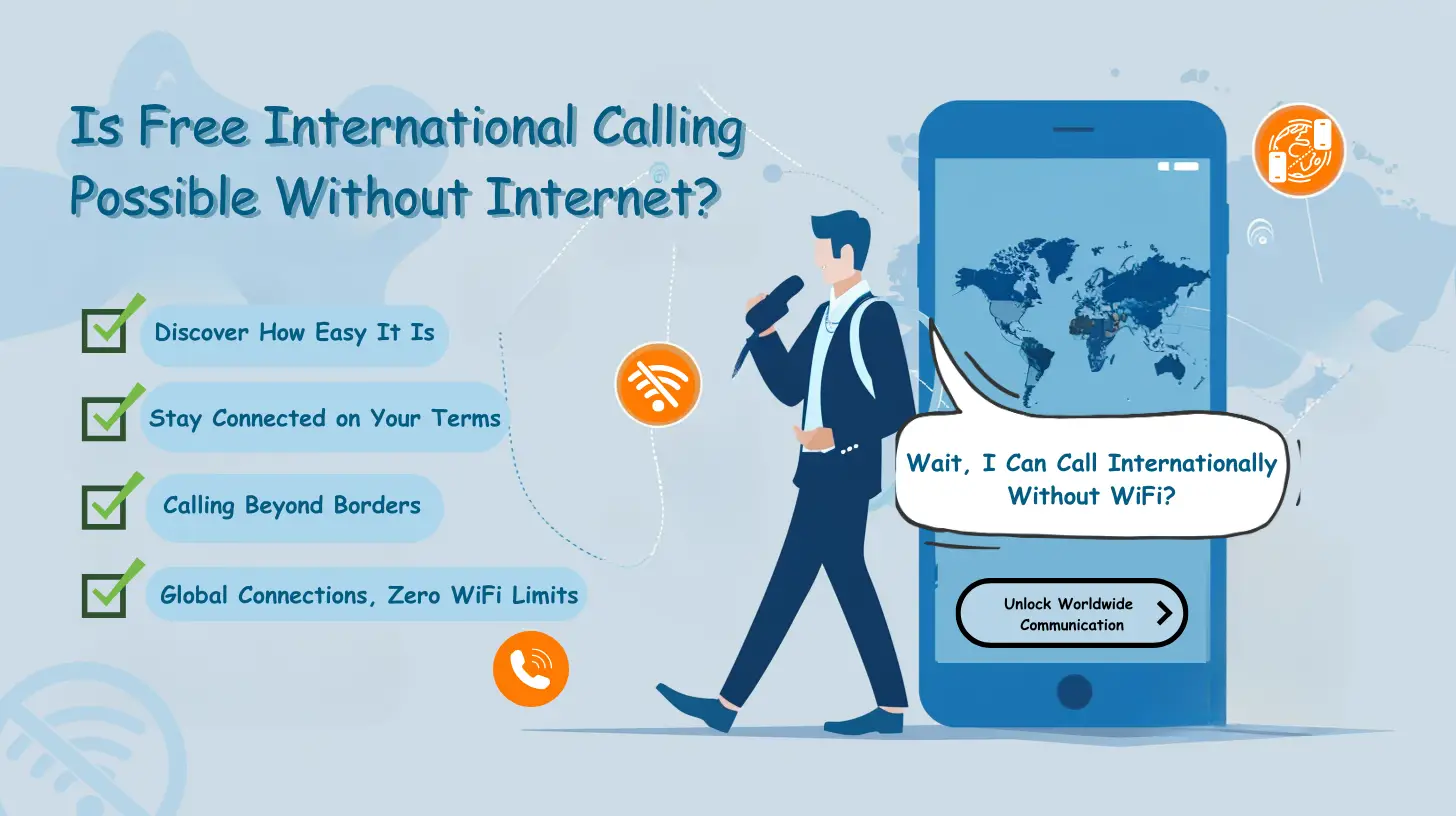SIP trunk licenses play a crucial role in unlocking the potential of SIP trunking for businesses. With the rise of Voice over IP (VoIP) technology, businesses are increasingly turning to SIP trunking to enhance their communication setup. In this comprehensive guide, we will provide you with all the information you need to know about SIP trunk licenses, from understanding the basics of SIP trunking to choosing the right provider and setting up your communication infrastructure.
So, what exactly is SIP trunking? It is a technology that allows businesses to make and receive telephone calls over the internet using Session Initiation Protocol (SIP). This means that instead of traditional phone lines, businesses can leverage their existing internet connection to transmit voice signals, resulting in cost savings and improved efficiency.
The benefits of implementing SIP trunking are numerous. Firstly, it offers significant cost savings compared to traditional phone lines. By consolidating voice and data services onto a single network, businesses can reduce their telecommunications expenses and eliminate the need for separate voice circuits.
Additionally, SIP trunking provides scalability and flexibility. As your business grows, you can easily add or remove SIP trunks to accommodate changing communication needs. This flexibility allows for seamless expansion without the need for physical infrastructure changes.
Another advantage of SIP trunking is improved reliability. With traditional phone lines, businesses are susceptible to outages caused by weather events or equipment failures. SIP trunking, on the other hand, offers built-in redundancy and failover capabilities, ensuring uninterrupted communication even in challenging circumstances.
When comparing SIP trunking with traditional phone lines, SIP connectivity comes out on top in terms of cost, scalability, and reliability. By choosing the right SIP trunk provider, businesses can also benefit from security measures, real-time analytics, disaster recovery options, interoperability with other systems, and international coverage.
Whether your business already has an IP PBX or is considering implementing one, SIP trunking is an essential component. It provides cost savings, geographic flexibility, future-proofing, control over communication systems, and the ability to implement unified communications.
If you’re ready to dive into the world of SIP trunking, our step-by-step guide will walk you through the setup process, including selecting a supported VoIP provider, configuring your account, and optionally enabling SMS/MMS capabilities.
- SIP trunk licenses are essential for businesses looking to leverage the benefits of SIP trunking.
- SIP trunking allows businesses to make and receive telephone calls over the internet using SIP.
- SIP trunking offers cost savings, scalability, flexibility, and improved reliability.
- Choosing the right SIP trunk provider is crucial for security, real-time analytics, disaster recovery, interoperability, and international coverage.
- SIP trunking is an essential component for businesses with an IP PBX, offering cost savings, geographic flexibility, future-proofing, control, and unified communications.
Understanding SIP Trunking: A Brief Overview
SIP trunking allows businesses to make and receive telephone calls over the internet using Session Initiation Protocol (SIP). It is a technology that has revolutionized communication systems, offering numerous benefits for businesses of all sizes.
With SIP trunking, businesses can leverage the power of VoIP (Voice over Internet Protocol) to transmit voice signals over the internet, eliminating the need for traditional phone lines. This not only reduces costs but also provides greater scalability and flexibility in managing communication infrastructure.
SIP trunking can be seamlessly integrated with other business systems and technologies, such as customer relationship management (CRM) software and call center platforms, enhancing overall productivity and efficiency. It also enables businesses to establish international coverage, making it easier to connect with customers and partners around the world.

SIP trunking offers businesses a reliable and cost-effective solution for their communication needs. By harnessing the power of the internet and SIP technology, businesses can streamline their communication processes, improve productivity, and stay connected in today’s fast-paced business environment.
Benefits of SIP Trunking for Businesses
SIP trunking provides cost savings, scalability, flexibility, and improved reliability for businesses. By leveraging this technology, companies can optimize their communication infrastructure and enhance productivity.
One of the key advantages of SIP trunking is cost savings. With SIP trunking, businesses can consolidate their voice and data services onto a single network, eliminating the need for separate phone lines. This consolidation not only reduces infrastructure costs but also lowers maintenance and operational expenses. Additionally, SIP trunking allows for dynamic bandwidth allocation, ensuring businesses only pay for the capacity they need, resulting in further cost savings.
Scalability is another benefit of implementing SIP trunking. Unlike traditional phone lines that require physical connections, SIP trunking can easily scale up or down based on business requirements. Whether it’s adding or removing lines, SIP trunking offers the flexibility to adjust communication capacity with ease. This scalability is especially beneficial for businesses experiencing seasonal fluctuations or rapid growth.
Flexibility is another advantage of SIP trunking. This technology enables businesses to integrate their communication systems with other technologies and platforms, such as customer relationship management (CRM) software, unified communications (UC) tools, and contact center solutions. By integrating these systems, businesses can streamline their operations, enhance collaboration among teams, and improve customer service.
Improved reliability is a critical aspect of SIP trunking. Traditional phone lines are susceptible to power outages and physical line damage, which can disrupt communication. SIP trunking, on the other hand, uses the internet to transmit voice signals, ensuring uninterrupted communication even during unforeseen events. Additionally, SIP trunking offers disaster recovery options, allowing businesses to quickly redirect calls in the event of a system failure or natural disaster.
Table: Key Benefits of SIP Trunking for Businesses
| Benefit | Description |
|---|---|
| Cost Savings | Consolidates voice and data services, reduces infrastructure and operational costs. |
| Scalability | Easily scale up or down based on business requirements. |
| Flexibility | Integrate communication systems with other technologies and platforms. |
| Improved Reliability | Minimizes downtime with uninterrupted communication and disaster recovery options. |

In conclusion, SIP trunking offers several benefits for businesses. It provides cost savings, scalability, flexibility, and improved reliability. By implementing SIP trunking, businesses can optimize their communication infrastructure, reduce costs, and enhance productivity. Whether it’s consolidating services, scaling up or down, integrating systems, or ensuring uninterrupted communication, SIP trunking is a valuable solution for modern businesses.
Comparing SIP Trunking with Traditional Phone Lines
When comparing SIP trunking with traditional phone lines, there are several factors to consider, including license costs and requirements. SIP trunking offers businesses significant cost savings compared to traditional phone lines. With SIP trunking, businesses can eliminate the need for physical phone lines and reduce expenses associated with hardware, maintenance, and long-distance calling. Additionally, SIP trunking allows for better scalability, as businesses can easily add or remove channels as needed without the hassle of installing new physical lines.
SIP trunking also provides greater flexibility compared to traditional phone lines. With SIP trunking, businesses have the freedom to choose their own VoIP provider, enabling them to select a solution that best suits their needs and budget. This flexibility also extends to geographic location, as SIP trunking allows businesses to have virtual phone numbers in different areas without the need for physical infrastructure.
Another advantage of SIP trunking over traditional phone lines is improved reliability. SIP trunking relies on the internet for communication, which is typically more stable and resilient than traditional phone lines. In the event of an outage or disaster, SIP trunking can provide disaster recovery options to ensure uninterrupted communication for businesses. Additionally, SIP trunking offers advanced features such as real-time analytics, which provide valuable insights into call quality and performance.
Table: Cost Comparison – SIP Trunking vs. Traditional Phone Lines
| Cost Category | SIP Trunking | Traditional Phone Lines |
|---|---|---|
| License Costs | Lower – No physical licenses needed | Higher – Licenses required for each line |
| Installation Costs | Lower – Minimal hardware required | Higher – Extensive hardware installation |
| Calling Costs | Lower – Reduced long-distance charges | Higher – Expensive long-distance charges |
| Maintenance Costs | Lower – Simplified maintenance | Higher – Regular maintenance required |
In conclusion, SIP trunking offers businesses numerous advantages over traditional phone lines, including cost savings, scalability, flexibility, and improved reliability. By choosing SIP trunking, businesses can streamline their communication infrastructure, reduce expenses, and enhance their overall productivity. However, it is essential to evaluate the license costs and requirements associated with SIP trunking to ensure it aligns with your business needs and budget.

When selecting a SIP trunk provider, it’s important to consider factors such as security, real-time analytics, and disaster recovery options. As businesses increasingly rely on SIP trunking for their communication needs, ensuring the reliability and performance of the service becomes crucial. Here are some key considerations to keep in mind:
- Security: Look for a provider that prioritizes security measures to protect your data and communication channels. This includes encryption protocols, firewalls, and secure authentication methods.
- Real-time Analytics: Choose a provider that offers robust analytics tools to gain insights into your communication patterns, call quality, and performance. This data can help you optimize your system and identify areas for improvement.
- Disaster Recovery: Ensure that your chosen provider has a comprehensive disaster recovery plan in place. This includes redundant systems, backup servers, and failover capabilities to minimize downtime in case of a network or hardware failure.
- Interoperability: Consider the compatibility of the provider’s SIP trunking solution with your existing systems and technologies. It should seamlessly integrate with your IP-enabled PBX and other communication tools to ensure seamless connectivity.
- International Coverage: If your business operates globally or has international communication needs, choose a provider that offers extensive international coverage. This ensures that you can make and receive calls to and from different countries without any limitations.
By carefully evaluating these factors, you can choose a SIP trunk provider that aligns with your business requirements and provides a reliable, secure, and feature-rich solution. Keep in mind that price should also be considered, but it should not be the sole determining factor. Prioritize the quality and capabilities of the provider to ensure a smooth and efficient communication setup.

| Security | Real-time Analytics | Disaster Recovery | Interoperability | International Coverage |
|---|---|---|---|---|
| Ensure data protection and secure authentication methods. | Gain insights into communication patterns and call quality. | Minimize downtime with redundant systems and backup servers. | Seamlessly integrate with existing systems and technologies. | Make and receive international calls without limitations. |
Quality and Efficiency of SIP Connectivity
The quality of SIP connectivity calls can be as good as traditional phone lines, and the transition to SIP trunking is often simpler and more efficient to manage. When it comes to call quality, SIP trunking leverages the power of the internet to transmit voice signals, resulting in clear, high-definition audio. With the right provider and a stable internet connection, businesses can enjoy reliable and crystal-clear voice communications.
Unlike traditional phone lines that require physical infrastructure and costly maintenance, SIP trunking uses virtual connections over the internet. This means businesses can easily scale their communication capacity without the need for additional physical lines. Whether you need to add new phone lines or accommodate sudden spikes in call volume, SIP trunking allows for seamless scalability and efficient management.
To further enhance efficiency, SIP trunking can be integrated with other business systems and technologies. This integration enables businesses to streamline their communication workflows, automate processes, and improve overall productivity. For example, SIP trunking can be integrated with customer relationship management (CRM) software, enabling employees to make calls directly from the CRM interface, access call records, and gather valuable insights.
| Key Points: | – SIP connectivity offers high-quality voice calls – Transitioning to SIP trunking is efficient and manageable – SIP trunking enables scalability and flexibility – Integration with other systems enhances efficiency and productivity |
|---|

Efficient Management of SIP Trunking
Managing a SIP trunking solution is typically straightforward and user-friendly. Most providers offer web portals or user interfaces that allow businesses to easily configure and manage their SIP trunks. From adding or removing phone lines to adjusting call routing rules, the management of SIP trunking can be done in a few clicks, reducing the need for technical expertise or extensive training.
Furthermore, SIP trunking provides businesses with valuable real-time analytics and reporting capabilities. These tools allow businesses to monitor call volume, analyze call data, and gain insights into their communication patterns. This data can be leveraged to optimize call routing, identify cost-saving opportunities, and make informed business decisions.
In summary, SIP trunking offers businesses a reliable, scalable, and efficient communication solution. With high-quality voice calls, seamless scalability, integration capabilities, and user-friendly management, businesses can optimize their communication infrastructure, increase productivity, and stay ahead in today’s competitive market.
Importance of Security in SIP Trunking
Security is crucial when it comes to SIP trunking, and businesses should thoroughly research and compare providers to ensure their communication infrastructure remains secure. With the increasing prevalence of cyber threats and data breaches, it is essential to prioritize the protection of sensitive voice and data transmissions.
When selecting a SIP trunk provider, businesses should consider the security measures they have in place. Look for providers that offer encryption protocols to safeguard your calls and data, such as Transport Layer Security (TLS) and Secure Real-time Transport Protocol (SRTP). These protocols ensure that your voice signals and messages are securely transmitted over the internet.
Additionally, it is crucial to choose a provider that has robust authentication mechanisms in place. Two-factor authentication, strong passwords, and firewall protection are some essential security features that can prevent unauthorized access to your SIP trunking system. Regular security audits and updates by the provider are also crucial to keep your infrastructure protected from emerging threats.
Comparison of SIP Trunk Providers
When evaluating SIP trunk providers, consider their track record in terms of security breaches and downtime. Look for providers that have a strong reputation for maintaining uptime and providing reliable service. Check if they have redundant network infrastructure in place to ensure uninterrupted connectivity and reliable service for your business.
| Provider | Security Measures | Uptime |
|---|---|---|
| Provider A | Encryption protocols (TLS, SRTP) | 99.9% |
| Provider B | Two-factor authentication, strong passwords | 99.8% |
| Provider C | Regular security audits, firewall protection | 99.5% |
Remember that the security of your SIP trunking system is only as strong as the provider you choose. Take the time to research and compare providers, considering their security measures, uptime, and overall reliability. By prioritizing security, you can ensure that your business communications remain protected from potential cyber threats and data breaches.

SIP trunking offers businesses with an IP PBX a range of benefits, including cost savings and geographic flexibility. By leveraging SIP trunking technology, companies can reduce their communication expenses significantly. Traditional phone lines often come with high maintenance and service costs, while SIP trunking allows businesses to consolidate their voice and data traffic over a single IP network, resulting in lower operating costs. This cost efficiency is particularly advantageous for businesses with a large number of phone lines or international calling requirements.
Cost Savings:
With SIP trunking, businesses can eliminate the need for multiple physical phone lines and associated infrastructure costs. By using a single IP connection for both voice and data communications, companies can reduce expenses related to telephone hardware, maintenance, and long-distance charges.
In addition to cost savings, SIP trunking also offers geographic flexibility. With traditional phone lines, businesses need to deal with limitations in terms of area codes and geographic locations. However, SIP trunking allows companies to establish a virtual presence in different locations by using local telephone numbers to communicate with customers and partners. This capability enables businesses to expand their reach and enhance customer relationships without the need for physical offices or additional infrastructure.
Another key consideration for businesses with an IP PBX is future-proofing their communication systems. SIP trunking offers a scalable solution that can easily accommodate future growth and evolving technology. Traditional phone lines often require significant investments and complex infrastructure modifications to scale up or add new features. In contrast, SIP trunking allows for seamless expansion and integration with unified communications applications, ensuring businesses can adapt to changing communication needs without disruption.
Furthermore, with SIP trunking, businesses have more control over their communication systems. They can easily manage and configure their SIP trunks through a user-friendly interface, empowering them to make real-time adjustments and optimize their communication infrastructure according to their specific requirements. This level of control enhances operational efficiency and enables businesses to deliver a superior customer experience.

In summary, businesses with an IP PBX can benefit from SIP trunking in various ways. It offers cost savings, geographic flexibility, future-proofing, control, and the ability to implement unified communications seamlessly. By choosing the right SIP trunk provider and leveraging the advantages of this technology, businesses can optimize their communication infrastructure and drive greater success in today’s competitive business landscape.
Setting Up SIP Trunking: A Step-by-Step Guide
Setting up SIP trunking involves a few key steps, including choosing a supported VoIP provider and configuring your account in your chosen communication system. To get started, follow these steps:
- Choose a Supported VoIP Provider: Research and select a reputable VoIP provider that offers SIP trunking services. Look for providers that offer competitive pricing, reliable service, and the features that meet your business needs.
- Configure Your Account: Once you’ve chosen a provider, sign up for an account and configure it in your chosen communication system. This may involve setting up SIP trunks, specifying call routing rules, and configuring other settings based on your specific requirements.
- Enable SMS/MMS Capabilities (Optional): If you need to send and receive text messages and multimedia messages through your SIP trunk, check with your provider to see if they offer SMS/MMS capabilities. If available, enable this feature and configure it according to your business needs.
Sample Table: VoIP Providers Comparison
| Provider | Price | Features | Reliability |
|---|---|---|---|
| Provider A | $20/month | Advanced call routing, real-time analytics | 99.9% uptime |
| Provider B | $25/month | International coverage, SMS/MMS capabilities | 99.7% uptime |
| Provider C | $30/month | Disaster recovery, 24/7 customer support | 99.8% uptime |
Once you have completed the setup process, you’ll be ready to start making and receiving calls through your SIP trunk. Remember to test your configuration and ensure that everything is working correctly before fully deploying SIP trunking in your business communication infrastructure.

By following this step-by-step guide, you can successfully set up SIP trunking for your business and take advantage of its benefits, including cost savings, scalability, flexibility, and improved reliability.
Conclusion On sip trunk license
In conclusion, SIP trunk licenses are crucial for businesses to fully utilize the advantages of SIP trunking in their communication infrastructure. SIP Trunking, which enables businesses to make and receive telephone calls over the internet using Session Initiation Protocol (SIP), offers numerous benefits such as cost savings, scalability, flexibility, and improved reliability.
SIP Trunking works by utilizing an IP-enabled PBX to transmit voice signals over the internet, allowing for integration with other business systems and technologies. When comparing SIP Trunking with traditional phone lines, SIP connectivity provides even greater advantages, including lower costs, greater scalability, and better reliability.
To fully leverage the benefits of SIP Trunking, it is essential to choose a provider that offers security, real-time analytics, disaster recovery, interoperability, and international coverage. Security is a critical aspect, and businesses should thoroughly research and compare providers before making a decision.
For businesses with an IP PBX, SIP Trunking is an indispensable component, offering cost savings, geographic flexibility, future-proofing, control, and unified communications. Choosing the right SIP Trunk provider requires considering factors such as price, security, resilience, and uptime.
The setup process for SIP Trunking involves selecting a supported VoIP provider, configuring the account in 3CX, and optionally enabling SMS/MMS capabilities. With the right SIP Trunk license and provider, businesses can optimize their communication infrastructure, enhance productivity, and stay ahead in today’s competitive landscape.




























